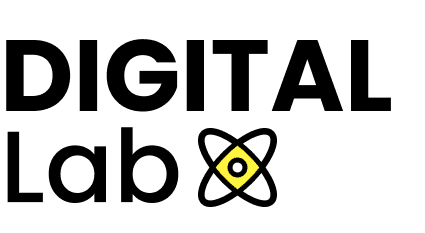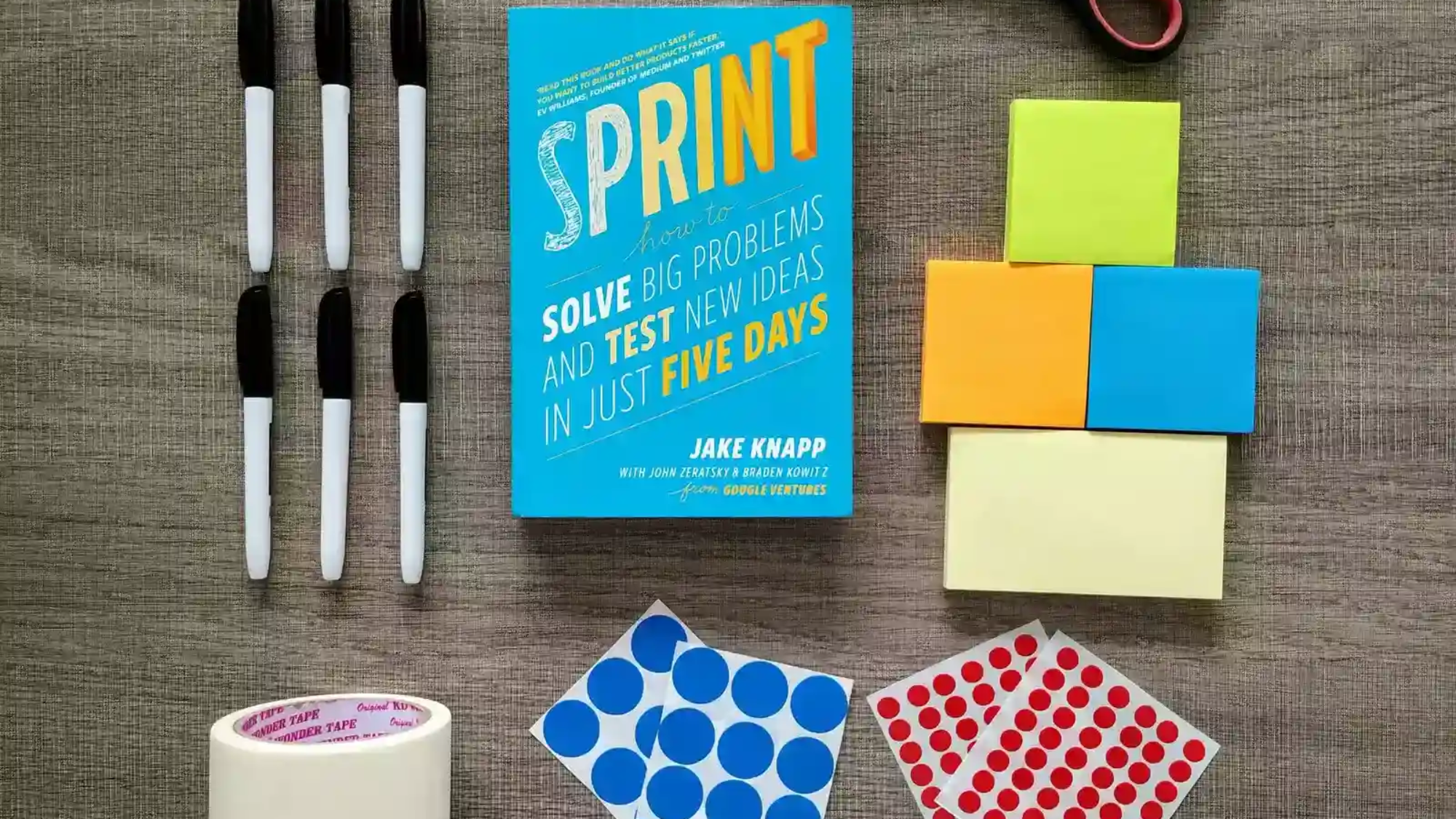What is a Design Sprint?
It is a framework a well-sequenced work process that enables teams to obtain tangible answers about the viability of a product/solution they have imagined.
Their feedback will help validate or not the initial assumptions, provide quick answers to different questions we may have and make any necessary iterations before implementing the solution (developing and integrating the technical aspects of the solution).
This framework primarily serves to establish a working structure that helps teams think co-construct and align on a clear project vision.
A 4-day week to validate a concept
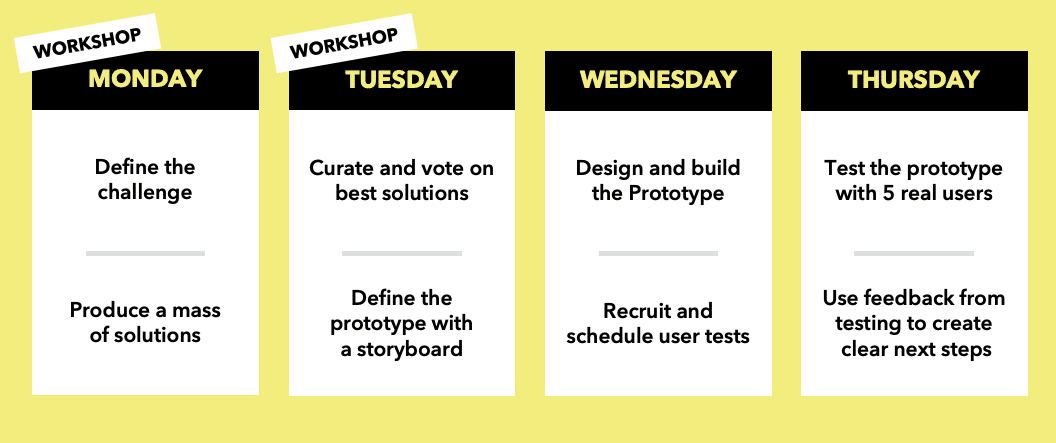
Who are the participants in the Design Sprint?
The Decision Maker: the person who will have the final say in the decision-making process.
The Experts: all other participants who will share their knowledge on the subject (Product Owner Data Analyst Marketing & Communication Devops UX Designer Business Owner Sales…).
The Facilitator: the person who will be responsible for facilitating the workshop, structuring the discussions, setting up the different exercises, monitoring time and ensuring that the workshop progresses in the right direction.
Before the D-day, it’s important to send an email to the participants with the details of the activities (schedule of the week objectives expectations and next steps).
The Design Sprint week is intense but it will allow the teams to engage in a real collaborative approach where everyone will feel they are actively participating and contributing to the development of a testable and measurable solution.
How does the week unfold?
Day 1 :
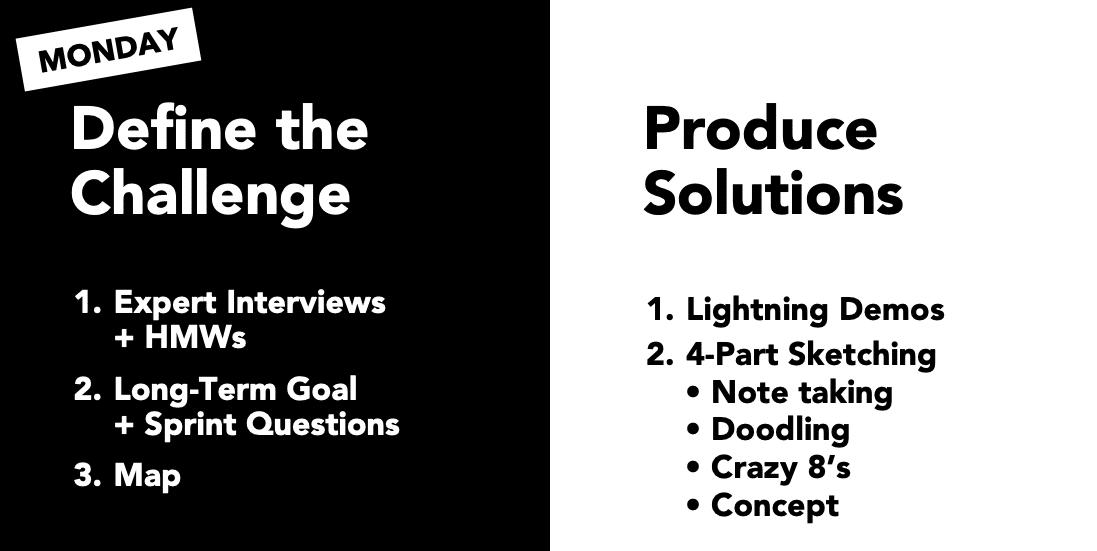
During this interview, the objective is to capture the various opportunities in the form of « How Might We », questions on post-it notes that will allow us to better reflect on potential solutions.
A voting system will be used to prioritize the most relevant opportunities to address during the sprint.
A voting system will allow alignment on the project vision and in the event of a tie the final decision will be made by the Decision Maker.
Map et Sketching
Next comes the mapping exercise which aims to identify the key stage of the journey that needs to be rethought first.
Participants will now look for examples of solutions different inspirations elsewhere and not necessarily in the same industry for creating their concepts.
Day 2
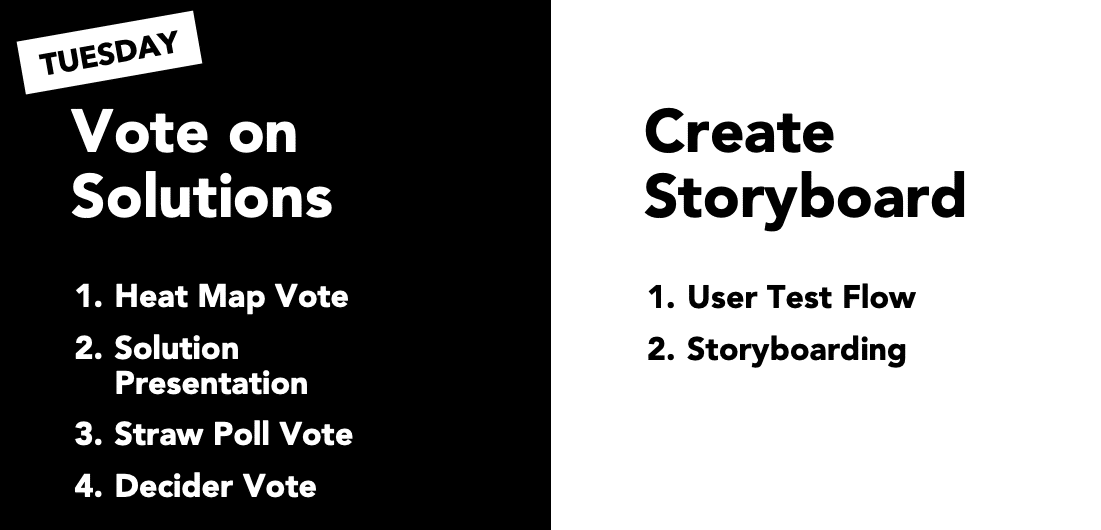
During Tuesday the team will mainly focus on item, concept, idea to be included in the final prototype.
There are at this stage of the sprint a whole series of votes for decision-making but once again, it will be up to the Decider to make the final call.
Sometimes the decisions made by the Decision Maker may go against the group’s preferences but it is important to remember that the final solution will be tested with real users and the results of the tests will show whether the concept is viable or not.
The group will be able to better visualize the winning concepts thanks to the clusters that will naturally form with the votes of each participant.
Everyone will vote again but this time on the best idea to develop.
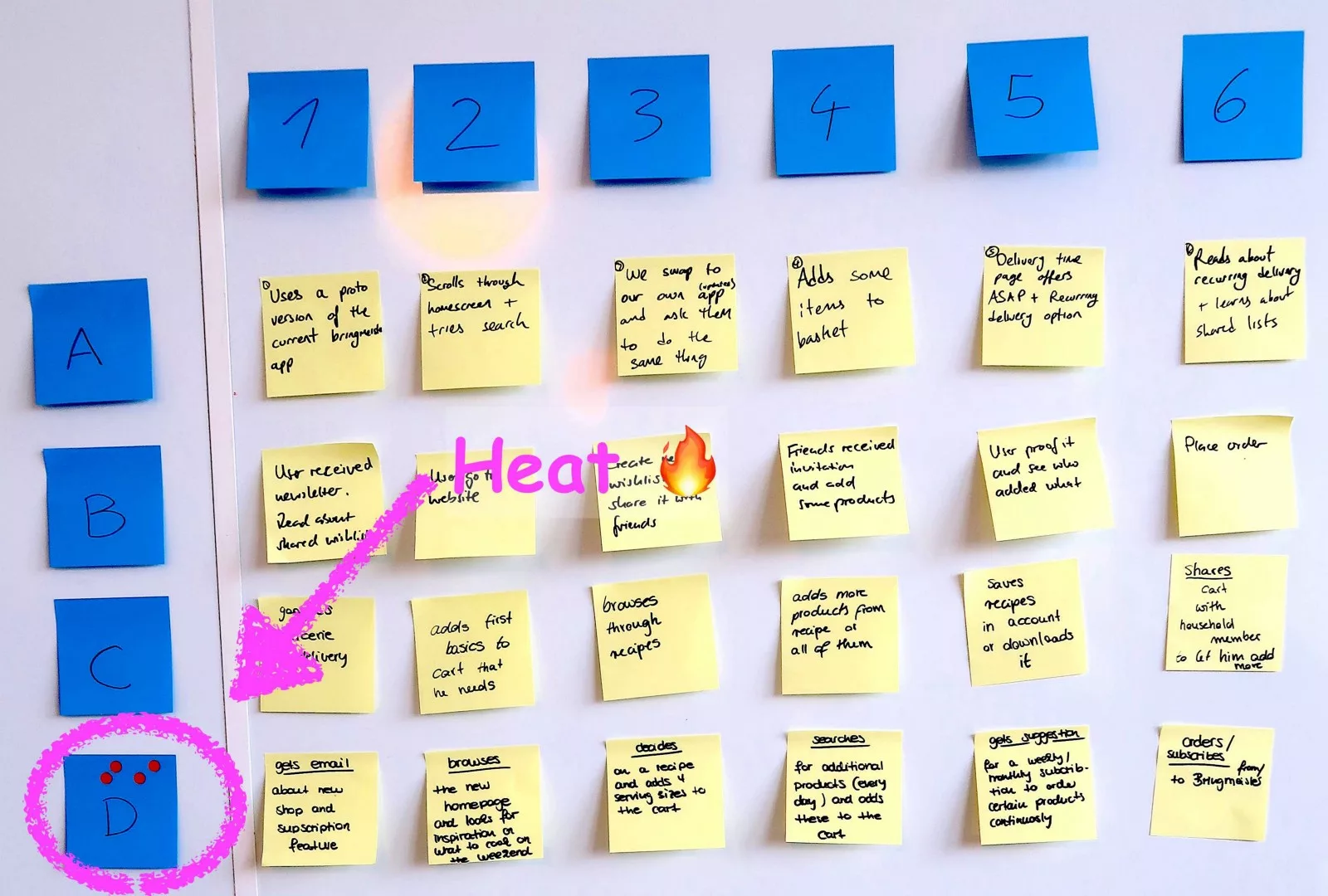
Day 3 & 4
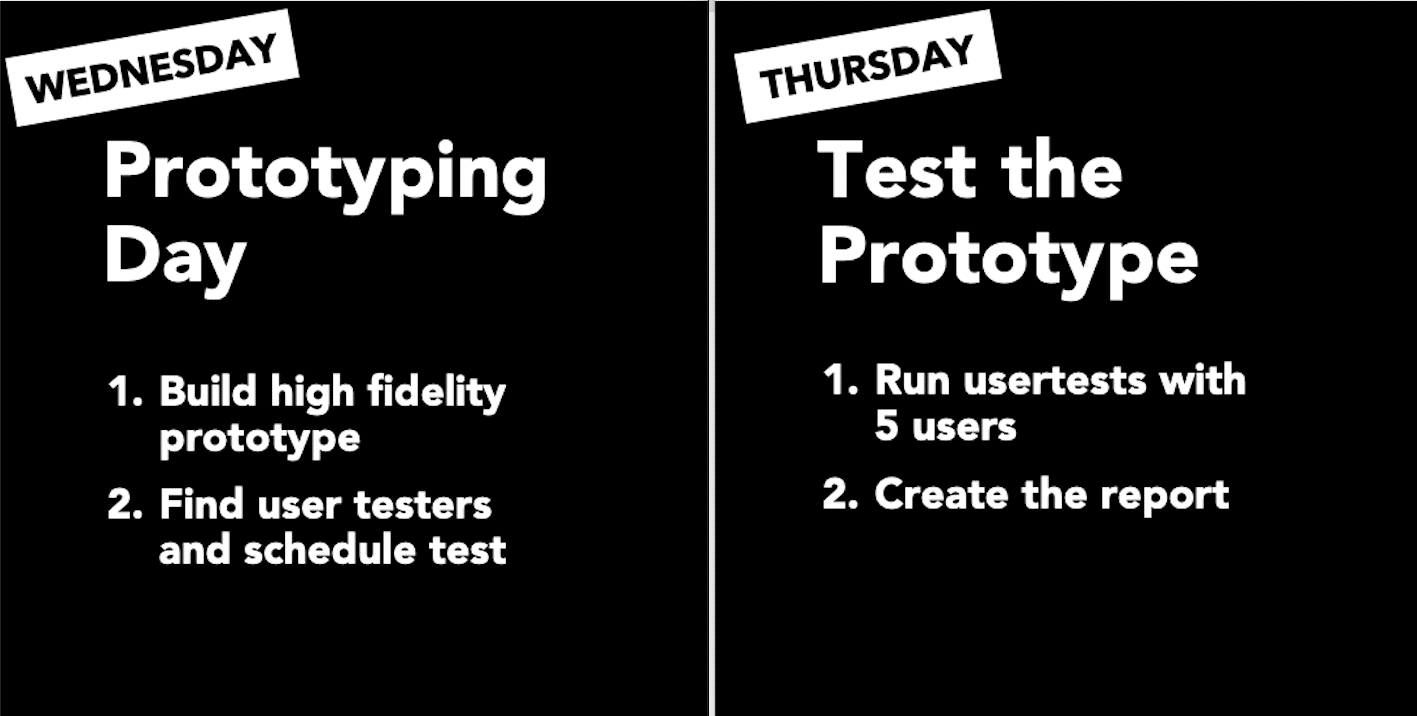
The goal is to build a high-fidelity prototype so that users feel like they are interacting with the actual interface (as close as possible).
Keeping in mind the goal of these tests the questions should be oriented towards confirming or refuting the various initial hypotheses and not obtaining approval for the visual quality of the prototype.
The results of the Design Sprint
After the testing day a lot of materials and information will be collected that will need to be sorted and categorized.
This work will allow us to have a list of recommendations / features that will be presented to the teams and that will need to be prioritized based on value and effort (Impact Effort Matrix).
Test usually involves 5-8 users but studies have shown that with 3 user tests, you will start to observe similar feedback from one user to another.
After testing the solution with 5 users you begin to identify what worked or not as well as hypotheses to review or refine.
Asking open questions to encourage users to express themselves is part of the best practices to adopt.
Asking for their opinion or point of view on what they see what they expect to see when clicking on a button for example capturing what is unclear and getting their feedback on the solution…
The user will do his best to give you his feedback by expressing himself freely if he feels comfortable.
Would it be possible to achieve the same result without using a Design Sprint?
The important thing to keep in mind with a Design Sprint, is that it brings together multiple expertise in a real collaborative approach aligning everyone on a common vision.
Communication and sharing of information is much more effective and the engagement of all participants in the project is undeniable.
Did you enjoy this article? Are you interested in learning more about the Design Sprint or being trained to implement it in your company?
